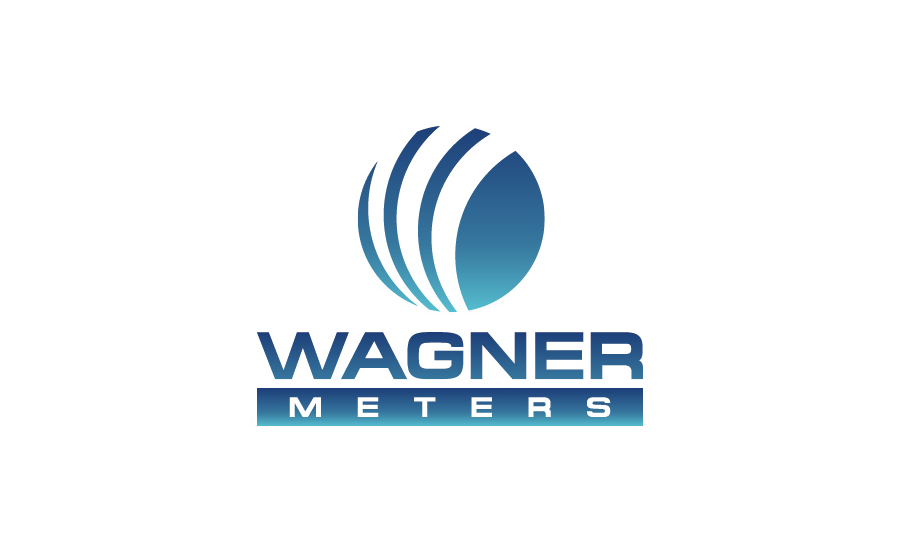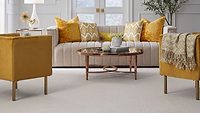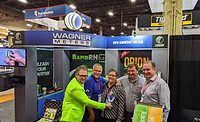
|
| Wagner Meters Celebrates 50 Year Anniversary |
The story of how our company came to be begins in the early ‘60s when my grandfather, Delmer Wagner, worked for a sawmill in Redmond, Ore.
As an electrician, he listened to management’s frustration with the contact moisture detectors they used to measure moisture in lumber. These detectors were in a cabinet the size of a man and came equipped with radio vacuum tubes. They were hard to use, hard to calibrate and hard to interpret.
Always up for a challenge, grandpa experimented with new designs and new technologies. He soon came up with the first in-line moisture detector using transistors.
Smaller and more compact than traditional detectors, it cost less to make, was much more reliable and easier to calibrate. Pleased with grandpa’s newly-designed moisture detector, the mill took out a patent on his device.
About that same time, 1963, grandpa left the mill to teach at a local college. After two years, he felt compelled to leave and start a business selling moisture detectors—a device he knew quite well.
In 1965, Wagner Electronics was founded. The company name remained the same until 2010 when we changed the name to Wagner Meters to better express the solution we offer to the market— moisture meters. However, when Wagner Electronics began, it focused on the forest products industry.
Grandpa designed a second in-line transistorized moisture detector working out of his garage in Terrebonne, Ore. Confident his new detector would sell, grandpa allowed the mills to use his detector for a month at no cost or obligation. They were to call him if they had a problem with it. Otherwise, he would return in 30 days to either pick it up or collect payment.
As expected, the new meters were a big hit. Sales took off and so did Wagner Electronics.
Innovation Fuels Wagner Meters’ Growth
I believe my grandfather’s vision and creative thinking led to our company’s success in those early years. He seemed blessed with an amazing intuition that led him to create a slew of new and innovative products that greatly improved the way moisture is measured.
For instance, he followed up his invention of the first transistorized in-line moisture meter with the first non-contact meter. This was huge for the forest products industry. No longer would the meter sensor wear out since this device never touched the wood like the original model.
Grandpa also figured out how to calibrate the meters in percent moisture content – unlike the relative scale that was awkward and hard to adjust. This saved time and made calibrating easier.
In the late ‘70s, he also helped kilns improve their operation by inventing an in-kiln moisture detector. Our first unit, Model 778, revolutionized the industry.
About the same time, grandpa introduced the in-kiln moisture detector. He also figured out a way to use in-line meters to troubleshoot kilns.
Our series of troubleshooting tools and processes proved to be invaluable. Kilns could now get the maximum value out of their wood. The amount of wood that came out too wet, with a need to be run through the kiln again, or too dry, causing it to warp, split and crack, had been significantly reduced.
At first, grandpa used microprocessors to aid in the troubleshooting. Later, as the information sought became more complex and the technology became available, we connected a computer directly to our in-line moisture meters.
The combination of computers and in-line moisture meters told operators the moisture ranges of the wood throughout the kiln. It also enabled them to track charges throughout the months and seasons of the year. And they could also track one kiln against another to see which one performed better with specific wood species.
Eventually, we kept refining that process to the point where we were able to track where each stack of wood came from out of the kiln. We also developed a histogram that showed the moisture content of boards as they were distributed throughout the kiln. Operators could see precisely where their wet/dry spots were in the kiln.
Grandpa and Wagner Electronics invented that whole process of kiln troubleshooting—a process that became a huge success. It has saved the mills hundreds of thousands of dollars.
From Father to Son
My father, Ed Wagner, started working for Wagner Electronics in 1967 at the age of 10. He started with wiring, assembling, soldering and testing meters.
By the time dad left for college, he was well grounded in all the technical aspects of the business. Shortly after earning a degree in engineering, he moved into management with his promotion to production manager.
When grandpa retired in 1987, he sold the majority of stock in Wagner Electronics to my dad. Dad was then named president and CEO of the company.
Dad was cut from the same cloth as his father when it came to creating and introducing innovative products. In fact, it was my dad’s idea that we also market hand-held pinless moisture meters to the mills.
He knew some mills were using hand-held pin-style meters, but they presented problems such as temperature sensitivity, which affected accuracy and lack of depth measurement. This motivated him to develop an improved hand-held meter—one that was pinless.
Dad spent considerable time and effort developing the technology of the pinless meter and making sure it was highly accurate. We started selling dad’s first model, the L600, to the mills in the early ‘80s, though we didn’t market it aggressively at first.
But we changed direction—and our marketing efforts—during the early 1990s recession. Hurt by the weak economy, the mills stopped buying capital equipment. This included the larger, more expensive in-line moisture detectors we were selling.
Since we knew the mills needed moisture meters, we stepped up our marketing of the smaller, hand-held pinless meters which they could better afford. Our efforts paid off. The mills were quite willing and able to buy them.
Fortunately, despite the recession, we were able to provide our customers with a meter they needed and could afford. So we survived.
But it got us thinking. Could we grow our business by expanding into another market—one in which there was a vital need to accurately measure moisture in wood?
The answer was easy—wood flooring. Thus, in 1992, we entered our first market outside forest products.
We heard that wood flooring installers at that time were only using pin-style moisture meters on hardwood floors. But we also heard how they hated having to make holes in the floors to get a reading.
After listening to wood flooring installers’ needs and concerns, we were able to offer them the perfect solution: our hand-held pinless moisture meter. It didn’t put unsightly holes in the wood and it was faster and easier to use.
The first pinless meter we introduced to the flooring industry was similar to the one we had developed for the mills. But we didn’t stop there.
We have continued refining and improving our original pinless model. Thus, each successive generation of pinless meters we brought to market was technologically more sophisticated and sported improved features.
Initially, we introduced the L606 and L607 models back in the ‘90s. Our latest model, the MMC220, is a non-invasive wood moisture meter that provides fast and accurate readings backed by an industry leading seven-year warranty.
Of course, we’ve had some challenges along the way. For instance, when we first introduced our pinless meters, we faced some skepticism about their accuracy.
A number of people believed they were not as accurate as pin-style meters. But independent third-party testing proved them wrong. Their tests showed our meters were not only more accurate than the best brands of pin-style meters, but a lot easier to use.
Also, our meters can take accurate readings even when there’s a little bit of moisture on the surface of the wood. We can measure right through surface moisture, to the moisture actually in the wood—unlike other meters on the market. Their readings are skewed much higher if even a trace of humidity or condensation is on the wood’s surface.
Our leadership at Wagner Meters has had a major impact on the wood flooring industry. And we’ve been an industry catalyst for many installers switching to non-damaging meters.
My dad chaired a number of ASTM Standards committees in past years and was a driving force in creating several ASTM Standards for testing moisture in wood.
Seeking a Solution for Concrete Moisture
In the late ‘90s, the flooring market presented us with a new opportunity.
About that time, we started hearing customers complain about the effect of wet concrete on wood flooring. If the concrete was wet when they installed a hardwood floor, the wood absorbed the water—ruining the floor.
Industry experts estimated annual flooring failures due to moisture at more than $500 million.
When some installers questioned how they could measure concrete to avoid disaster, we worked to find a solution. At first we weren’t making much progress. But then, in 2004, my father had a conversation with Howard Kanare. At the time, Kanare was employed by the CTLGroup, Portland Cement’s Material-Testing Laboratory Service in Skokie, Ill. This group was also working on the issue.
Kanare suggested the first concepts of what was to become the Rapid RH, our first tool for measuring moisture in concrete. Wagner Meters and the CTLGroup collaborated to develop the Rapid RH, an in-situ relative humidity testing system for concrete. We introduced it to the flooring industry in 2005.
Of course, there were other ways of measuring concrete moisture, including the Calcium Chloride test. But they were not as quick or reliable as the Rapid RH.
For instance, the Calcium Chloride test—once used widely throughout the industry—proved often to be unreliable. Installers using it continued to have flooring failures. At times the test showed the concrete was dry when it really wasn’t. Many wood floors, and even businesses, were lost as a result.
We developed the single-use Rapid RH to eliminate the hassle of the reusable probes available in the market. The reusable probes were expensive, hard to use and had to be sent back to the factory for re-calibration. Presently, the Rapid RH 4.0 is our most advanced single-use system.
Yet, we realized we also had customers who wanted a reusable system. Their only option before we responded to their need was to use the reusable products sold by our competitors. Unfortunately, these systems offered several disadvantages, as already noted.
In order to better serve those flooring inspectors who preferred a reusable system, we developed the Rapid RH 5.0. Unlike the competitive systems, the Rapid RH 5.0 offers faster and more accurate concrete moisture testing, as well as greater convenience and cost savings.
Now, our customers can choose between the advantages of our single-use or our reusable systems, or even use them together if their job calls for it.
Since its introduction in 2005, the Rapid RH has since become the industry’s No. 1 selling relative humidity test for more than 10 years. In 2006, the original Rapid RH won the “Most Innovative Product” award at World of Concrete (WOC).
In 2013, the Rapid RH DataMaster won the “Most Innovative Product” award at WOC. A hand-held device, the DataMaster pairs touchscreen capabilities with Bluetooth technology to allow users to quickly and easily record all test data for a particular job site.
The Key to Our Longevity
Fifty years is a long time for a company to survive. In fact, according to the latest statistics, the lifespan of many companies is typically 15 years.
So what is the key to Wagner Meters’ longevity? Several things come to mind.
First, it’s the dedication, creativity, and incredible work ethic of my grandfather and all the many excellent people who have ever worked for this company.
It’s maintaining a family-run, family-oriented business adhering to solid core values—core values that have helped us make sound, ethical decisions.
It’s sustaining a culture of innovation. Throughout our history, we’ve developed more innovative moisture measuring products than any other company—products that have radically reshaped the flooring industry.
It’s manufacturing reliable, quality products built to last—products known worldwide for their accuracy and superb performance as documented by independent third-party testing.
It’s being a leader in educating our customers about the characteristics of wood and concrete, and how moisture affects both of them. This education effort started with my grandfather and it continues today through content and videos offered via trade journal articles, our website, social media and more.
And last, but not least, it’s putting a huge emphasis on our valued customers. We excel at listening to our customers, understanding their needs and giving them an exceptional customer experience.
In closing, on behalf of my grandpa, now retired, my father and the best employees anywhere, I want to thank our flooring customers for their unwavering loyalty and trust in Wagner Meters these many years. We greatly appreciate you and pledge to continue providing you with superior service and innovative products for our next 50 years—and beyond.
About Eric Wagner
Eric is excited about being a part of the solution to the many billions of dollars of moisture problems that cause waste in the U.S. and the world. It also helps that he enjoys spending his free time woodworking, and he knows his projects will be free of moisture issues.
For more information, visit wagnermeters.com.






